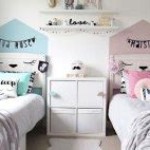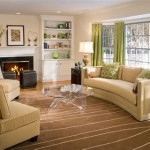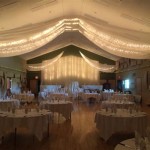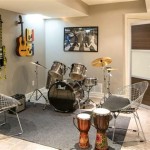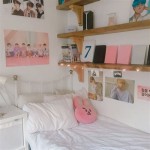Drawing Room Decoration
The drawing room, often the first room guests encounter, serves as a central hub for social gatherings and relaxation. Its decoration reflects the homeowner's taste and sets the tone for the entire house. Careful planning and execution can transform this space into a welcoming and stylish haven. This article explores key considerations for creating a beautiful and functional drawing room.
Defining the Room's Purpose
Before embarking on any decoration project, it's crucial to establish the room's primary function. Will it primarily serve as a formal reception area for guests, a casual family gathering space, or a combination of both? Understanding the intended use will guide decisions regarding furniture selection, layout, and overall ambiance.
Choosing a Suitable Color Palette
The color scheme significantly impacts the mood and atmosphere of a drawing room. Light, neutral colors create a sense of spaciousness and airiness, while bolder hues can add drama and personality. Consider the room's size, natural light exposure, and desired ambiance when selecting a color palette. Using a combination of complementary or analogous colors can create a cohesive and visually appealing look. Incorporating accent colors through cushions, throws, and artwork can add depth and interest.
Selecting Appropriate Furniture
Furniture choices should align with the room's purpose and overall design aesthetic. For a formal drawing room, elegant sofas, armchairs, and a coffee table might be appropriate. A more casual setting may call for a sectional sofa, comfortable recliners, and a media console. Ensure the furniture is proportionate to the room's size and allows for easy movement and conversation flow. Investing in high-quality, durable pieces will ensure longevity and comfort.
Lighting Considerations
Lighting plays a vital role in creating the desired ambiance. Layered lighting, incorporating ambient, task, and accent lighting, is essential for a well-lit and functional drawing room. Ambient lighting provides overall illumination, while task lighting focuses light on specific areas for activities like reading. Accent lighting highlights architectural features or artwork, adding depth and visual interest. Consider using a combination of ceiling fixtures, table lamps, floor lamps, and wall sconces to achieve a balanced and inviting lighting scheme.
Incorporating Textures and Patterns
Adding texture and pattern can enhance the visual appeal and create a more dynamic space. Incorporating various textures through textiles, such as cushions, throws, and rugs, adds depth and warmth. Patterns can introduce personality and visual interest, but it’s important to use them judiciously to avoid overwhelming the space. Mixing and matching patterns requires careful consideration of scale, color, and style to ensure a cohesive and balanced look. Using a variety of textures and patterns can create a rich and layered aesthetic.
Accessorizing the Space
Accessories are the finishing touches that personalize a drawing room and reflect the homeowner's style. Artwork, decorative objects, mirrors, and plants can add personality and visual interest. Carefully curated accessories can enhance the overall design and create a cohesive look. However, avoid cluttering the space with too many items. Select a few key pieces that complement the overall aesthetic and add character to the room. Consider using accessories to introduce pops of color or texture.
Window Treatments
Window treatments play a crucial role in both the aesthetics and functionality of a drawing room. They control the amount of natural light entering the room, provide privacy, and add a decorative element. The choice of window treatments depends on the room's style and the desired level of light control and privacy. Options include curtains, drapes, blinds, and shades. Consider the fabric, color, and pattern of the window treatments to ensure they complement the overall design scheme.
Creating a Focal Point
A focal point provides a visual anchor and draws the eye into the room. This could be a fireplace, a large piece of artwork, a striking piece of furniture, or a window with a beautiful view. Arranging furniture around the focal point can create a sense of balance and harmony in the room. Highlighting the focal point with appropriate lighting can further enhance its impact.
Considering Traffic Flow
When arranging furniture, consider the traffic flow within the room. Ensure there is ample space for people to move comfortably around the room without bumping into furniture. Create clear pathways between different areas of the room. The layout should facilitate conversation and allow for easy access to seating and other functional areas.

Seven Effective Drawing Room Decoration Ideas Design Cafe

15 Latest Drawing Room Design Ideas Designcafe

Latest Drawing Room Interior Decorating Ideas Designs Ads Stan Decor Decoration Design

Seven Effective Drawing Room Decoration Ideas Design Cafe

Drawing Room Interior Design In Desh Studio Ace

Drawing Room Decoration Styling Dubai

10 Unique Drawing Room Décor Inspirations For Every N Home Beautiful Homes

How To Decorate A Small Drawing Room

Seven Effective Drawing Room Decoration Ideas Design Cafe

Drawing Room Interior Design In Desh Studio Ace
